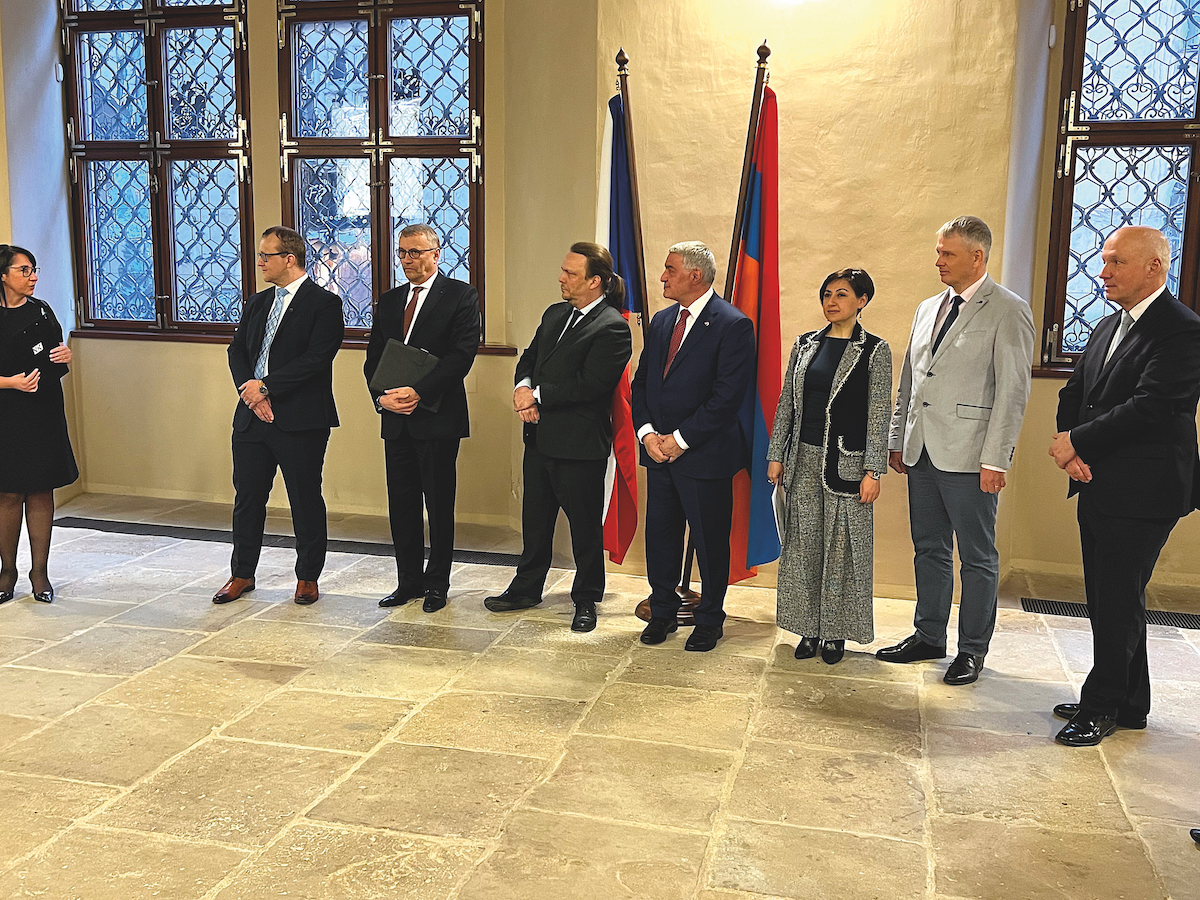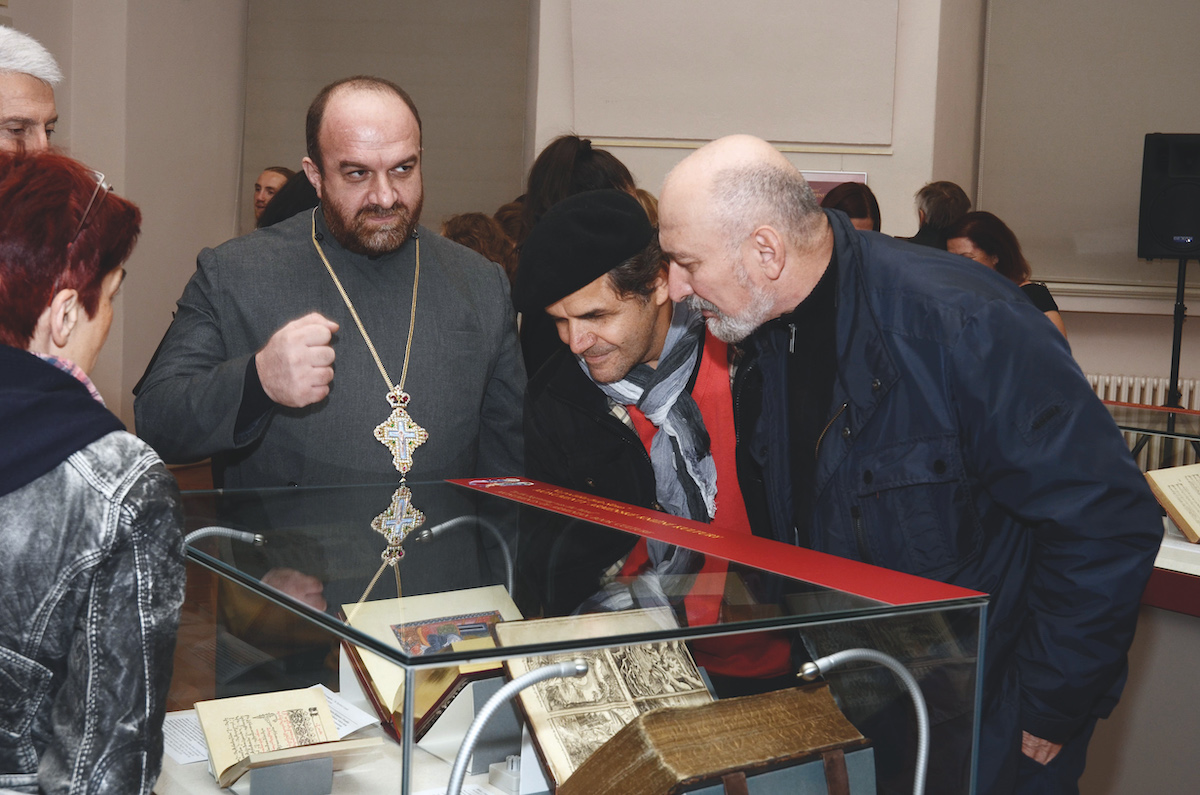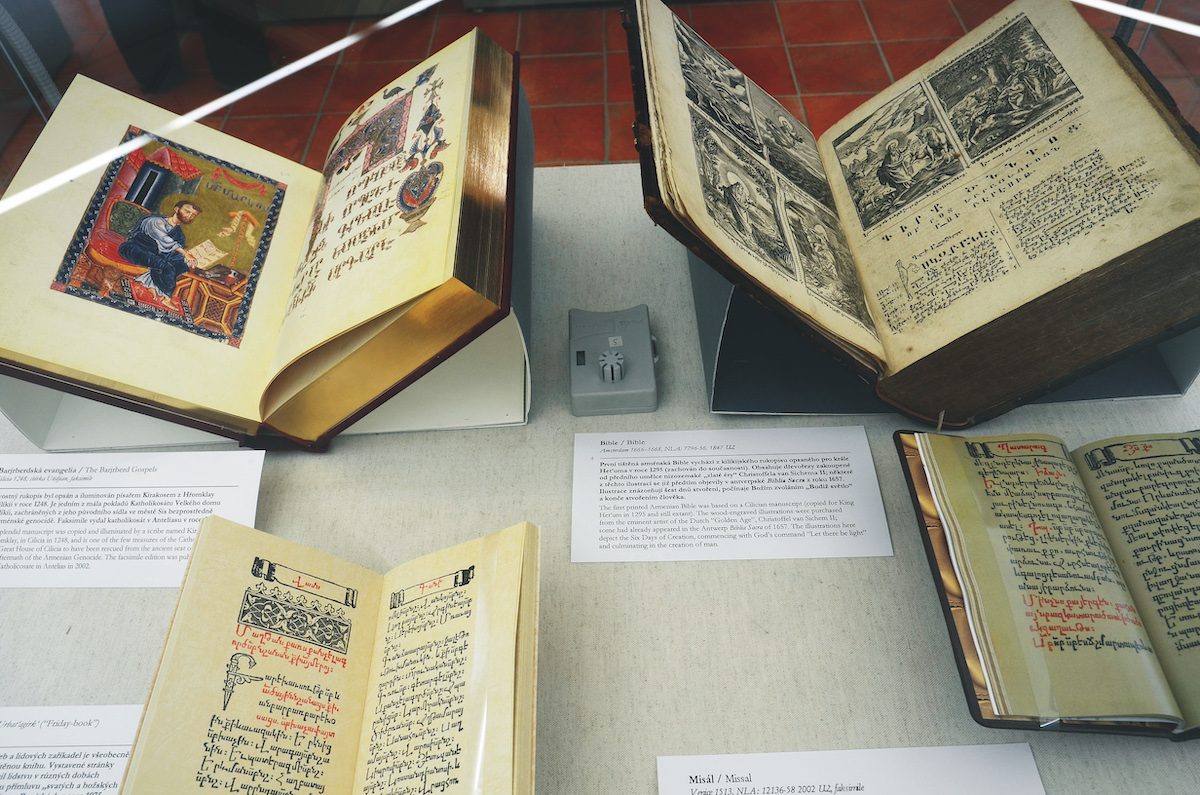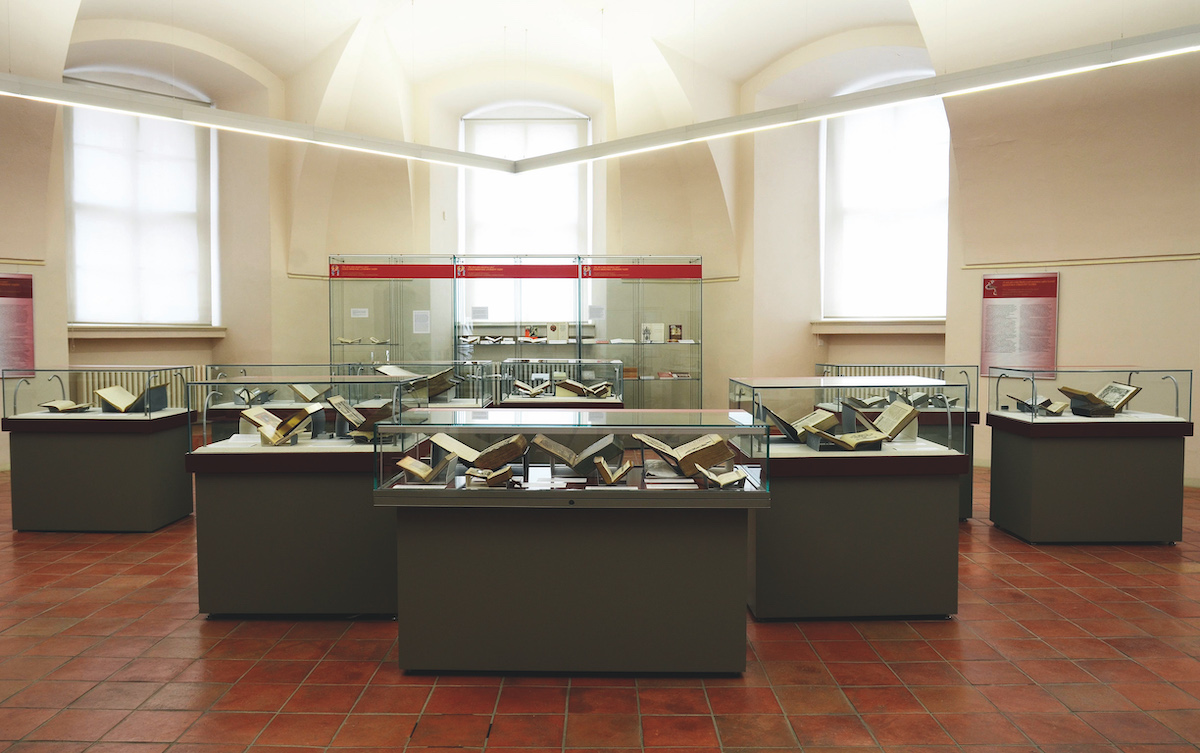
Text: Martina Hošková and M. Zisso; Photo: E. Hodíková
The cooperation between the national libraries of the Czech Republic and Armenia started over a decade ago. It is well on track, and has entered a new stage of development on 4th April this year, when an exhibition called “Hi Armenia” opened at Prague Klementinum.
Special thank you to Ph.D. Anna Chulyan, Director of the National Library of Armenia and Mgr. Tomáš Foltýn, General Manager of the National Library of the Czech Republic

New and forgotten bridges, re-discovered
The exhibition was organised by the National Library of the Czech Republic and the Embassy of the Republic of Armenia to the Czech Republic, in order to celebrate the 30-year anniversary of diplomatic relations between the two countries. Within the current realities, it signifies a new turn in diplomatic relations. It is the fruit of cultural diplomacy that, by its notion, bounds cultures across the seas, builds bridges between unrelated cultures, and even transcends politics, while facilitating cooperation and partnership.
The libraries’ close partnership traces back to 2011, and in 2013, a cooperation agreement was signed: the libraries prepared lists of books of mutual interest from their collections to share with one another. This resulted in the discovery of fascinating old printed books on Armenian culture in the holdings of the
National Library of the Czech Republic, such as the rare Patmut‘iwn Hayoc (History of the Armenians) by Movses Xorenac‘i, printed in Amsterdam in 1695. Furthermore, the National Library of Armenia (NLA) joined the Manuscriptorium Digital Library, operated by its Czech partner. It not only contains 500 bibliographic records of Armenian old printed books, but also virtually represents the first Armenian book Urbatagirk, printed in Venice by Hakob Meghapart in 1512.
Czech literature can also be found in the NLA collection, represented by the World Literature at NLA database, which is regularly replenished. There are also Czech translations of Armenian writers’ works such as Bakunts, Charents, and Sevak, as well as exophonic foreign writers William Saroyan and Varuzhan Voskanyan.

Continuing the strengthening of mutual experiences
In 2014, the National Library of Armenia organized an exhibition dedicated to the Czech Republic’s Independence Day, and received a great response. Moreover, back in 1978, the Yerevan City Library Branch #33 was named after the Czech Armenologist Lyudmila Motalova, for her significant contribution to Armenology.
A unique exhibition titled “The Art of Armenian Book through the Ages” took place in October 2016, which strengthened the libraries’ mutual experience. The exhibition highlighted the intercultural relations between the two nations and countries, e.g. from the Czech side, the book Hrůzy východu written by Karel Hansa (1923) and the novel The Forty Days of Musa Dagh by the Prague writer Franz Werfel (1933) were exhibited. Both books awaken the world to the evidence of the persecution and genocide inflicted on the Armenian nation during World War I.
The display included over 70 exhibits: unique samples of early printed Armenian books, Armenian editions of modern Czech literature, and Armenian writers’ works in the Czech language. A joint illustrated catalogue of the exhibition was also published.
During reciprocal visits in partner libraries, special seminars were organized for librarians in both countries where they could receive more information about the work done, especially in the areas of digital access to documentary heritage, implementation of integrated library systems, and (not only) the running of projects and research activities.


